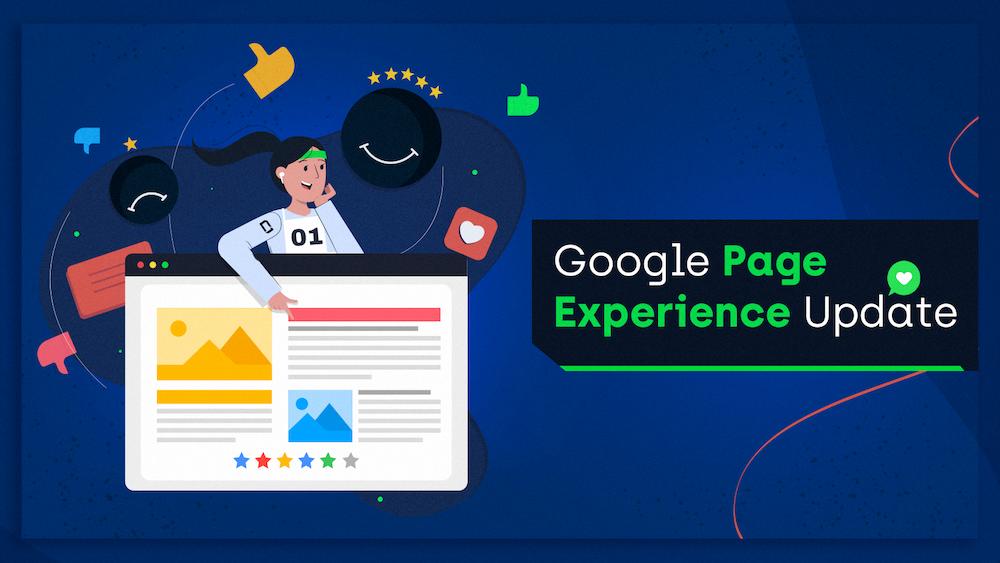On average, companies spend 10% to 20% of their technology budget to resolve their technical debt.
Even though technical debt is mainly generated by software development, it can affect every part of your business, including technical SEO.
Unfortunately, technical debt can stay hidden for years and seriously hurt your business when you least expect it.
Large organizations with various digital products are at a greater risk of running into technical debt.
And when new services are built upon a faulty tech stack, the interest on the debt can accumulate. In a McKinsey survey, 60% of CIOs claimed that their technical debt has increased over the years.
There’s no cutting corners when it comes to reducing technical debt, which is why our technical SEO services entail a complete, bespoke analysis of each technical aspect of your website.
What is technical debt?
Technical debt is a metaphor describing the consequences of technical issues that occurred in the past but weren’t addressed immediately.
If the digital product or service is to be continuously developed, a time will come when the debt needs to be paid back, usually with interest. The interest can take many forms: money, time, or additional effort.
Technical debt can be both intentional or unintentional.
Intentional technical debt is a deliberate decision taken to move forward with a project. Just like getting into a financial loan, a person or a company might get into technical debt to meet a deadline or save money. It’s a shortcut that can allow you to build quicker. Thus, intentionally taking on technical debt is a strategic move that, although risky, may turn a profit.
On the other hand, technical debt might occur due to a lack of knowledge, neglect, or wrong prioritization of tasks. Sometimes, you may be unaware that you’re getting into debt and only notice it when new problems arise. That’s unintentional technical debt.
Technical SEO – the technical shape of your website – is particularly sensitive to technical debt.
A lot of the time, technical SEO implementations are time-sensitive. Therefore, if a technical debt comes to light when you have urgent technical SEO issues to address (like during migration or after a sudden drop in visibility), it may cause severe problems or even make it impossible to fix the issue on time.
On the other hand, unaddressed technical SEO issues can generate lots of technical debt.
Lack of technical SEO knowledge might result in making wrong decisions contributing to technical debt.
SEO-related technical debt can occur for various reasons:
- Technological mistakes,
- Poor choice of hosting,
- Website migration,
- Poor documentation, or
- Negligence of website’s mobile version.
Technological mistakes
The choice of the technology you use influences how your website works and possibly sets some SEO limitations.
Most common SEO-related technological mistakes include:
- Using outdated technology,
- Wrong choice of platform,
- JavaScript-related issues.
Outdated technology
Technical SEO is ever-changing. New updates come, and old trends become obsolete.
If you’re using outdated technology, there’s a risk that some of the new features won’t be possible to implement on your website or search engine bots won’t be able to index your content.
Let’s take modern image formats as an example. WebP allows you to provide images in smaller sizes without sacrificing their quality. It’s undoubtedly a positive aspect, but unfortunately, older CMS versions usually don’t support the format.
The support is slowly being added, and for example, WordPress has supported WebP since its 5.8 version, released in July 2021. It means that if you’re using an older version, you can’t implement the format.
On the one hand, outdated technologies might prevent you from using modern features.
But, on the other hand, existing technologies might lose support over time. For example, obsolete code on your website might not be supported by browsers anymore, which can make them display your content inappropriately.
Here’s a list of HTML tags with highlighted elements no longer supported in HTML5 – it’s a good idea to make sure your website isn’t using these tags anymore.
Wrong choice of platform
The CMS or eCommerce platform you choose for your website may influence the range of available features and other aspects, like its speed. It can also possibly come with some SEO limitations.
Core Web Vitals Technology Report shows that some CMS and eCommerce platforms can be slower than others. It doesn’t mean that there’s one superior system that guarantees faster websites. Two websites using the same CMS may have different speeds because they use different themes or different plugins. But it’s something to consider when you’re choosing a platform for your site.
Some of the website themes require heavy scripts to work. John Mueller addressed the issue and said that themes might affect:
- Page load time,
- The way of displaying the content,
- Internal linking, and
- The use of structured data.
But that’s not all. Plugins might be helpful, but they need to be used in moderation.
Some plugins may add further queries to the database or extra code that the browser needs to download. Altogether, it can impact the performance of your website and slow down its loading time.
On the other hand, websites with light plugins may work just fine. Supporthost has a list of plugins that may affect your performance and suggests alternative, less performance-heavy choices.
Additionally, some of the platforms might not be SEO-friendly. Some common problems that may occur with eCommerce platforms include:
- Inconsistent use of the canonical tag,
- Difficulty in adding meta tags, and
- Issues with adding basic features, e.g., the related items section or abandoned cart recovery.
JavaScript allows your website to be more interactive and gives you the ability to manipulate the content dynamically.
Crawling JavaScript-rich websites is a complex and time-consuming process. Search engine bots need to download additional code, parse, compile and execute JavaScript, and possibly fetch data from external APIs.
Search engines bots can’t click buttons or scroll, so if it’s the only way to discover content, it might not be found by the bots. Moreover, they might not even download all the resources if they don’t think they are required, causing a risk of not fetching some JavaScript files and not executing the code.
Additionally, some JavaScript libraries are very extensive, and you need to make sure the chosen library is optimal for your needs. Most of them will have some dependencies. It simply means that they depend on other libraries to execute some function, and the browser will have to download and run them all.
Therefore, uploading a whole, extensive library when you want to use only one minor feature might unnecessarily add a lot of code to your website. Google has some tips on optimizing JavaScript dependencies that you could use to minimize the negative effect on your website.
Also, contact us to get a JavaScript SEO audit and find out how we can improve your website, or read our guide on JavaScript SEO.
Consequences of technological mistakes
The consequences of building your website on faulty or outdated technology include:
- Slow page loading time,
- Crawling and indexing issues,
- Limitations in implementing basic SEO features, and
- Security issues.
Your website’s loading speed is an essential part of the user experience you provide for your customers. Google ran a study that explored the correlation between loading speed and bounce rate and proved that the probability of users bouncing back to the SERP increases with increased loading time.
Page speed can also directly affect your ranking. The most critical metrics that need to be mentioned here are Core Web Vitals. Google considers them as one of the indicators of the page experience you provide. You can also find the importance of page loading time for ranking in Bing’s Webmaster Guidelines.
If a platform doesn’t allow easy implementation of basic SEO features, it will require expensive and time-consuming custom development. That’s why not considering it at the beginning means you will have to spend more time and money in the future to pay your technical debt.
Crawling and indexing issues might be the consequences of using outdated technology or heavily relying on JavaScript. If your content can’t be indexed, it won’t appear in the search results, decreasing your traffic.
Additionally, outdated technologies might lead to security issues and put your websites in danger of cyberattacks. They are also prone to malfunctioning. So, instead of saving money and time, you may end up paying more for the necessary fixes to keep the system going and possibly for the data restoration.
Poor choice of hosting
Choosing the hosting provider is one of the first steps when creating a website and one that you should thoroughly research.
Your site needs to be accessible to users and search engines, and that’s why you should make sure that your server can withstand the traffic. You can’t allow your customers and bots to encounter a server error or page timeout.
Some of the other factors you need to consider include:
- Server location,
- Responsive support team, and
- Automatic backups.
Good hosting is expensive. However, the desire to save money and insufficient awareness about server requirements will put you in technical debt.
Consequences of the wrong choice of hosting
A server with insufficient capacity may become overloaded, which means that users and search engines’ bots won’t be able to use your website.
As Martin Splitt explained in the Rendering SEO webinar, insufficient capacity might influence the crawling of your website. Step by step, the situation might look like this:
- Googlebot begins the crawling of a page and encounters a server error.
- It withdraws from crawling the page because it doesn’t want to push the server over its limits.
- When Googlebot notices that backing off had a positive effect on the server’s functions, it can crawl the page again.
- Googlebot goes back to the page, but the situation repeats itself, and the server gives up again.
It creates a vicious cycle with bots backing off and returning again but not crawling the page. If the page can’t be crawled, it won’t be indexed and won’t appear in search results.
Additionally, server location affects how quickly the users can receive your content. The farther away they are from your server, the longer it will take to access your website. Therefore, make sure to consider what is the optimal server location for your website or use a Content Delivery Network.
Choosing hosting that has an unhelpful support team may also cause problems in the future. For example, imagine waiting a month before the technical support team will respond to your concerns.
Website migration
Website migration is a broad term that simply means your website undergoes significant changes, including but not limited to:
- Changing your domain,
- Changing CMS, or
- Changing website architecture.
You might want to perform a website migration to rebrand your website or move to a platform that better meets your needs and expectations.
However, website migration can’t be a hasty decision. John Mueller stressed the importance of a good migration strategy in his tweet:

Website migration involves planning, testing, and cooperation with specialists like developers, designers, and SEOs. Rushing into it without the knowledge of the process may bring serious consequences.
Consequences of website migration
Many things can go wrong during a website migration.
An example can be setting up incorrect redirects or creating redirect chains that may result in the “Redirect error” issues. You need to make sure that old URLs are correctly redirected to new ones.
Website migration might cause broken internal links resulting in problems with navigation both for users and the search engines.
Need some help migrating your website? Take advantage of our website migration services.
Poor documentation
Creating good documentation takes time, and it tends to be overlooked while developing a new product.
During production, everything might seem evident to your developers. But if you go back to your code after six months, you won’t probably remember what each line of code does and why it’s needed.
Creating good technical documentation is only a part of the problem. After all, we’re not always responsible for creating it. We also need to ensure that the systems and platforms we’re choosing have detailed documentation.
Not dedicating enough time to ensure that the product you’re using has thorough documentation can significantly contribute to technical debt.
Consequences of poor documentation
Creating or using products with poor documentation always means you’ll eventually have to spend additional time researching or contacting support.
Implementing features might be extremely time-consuming if there isn’t enough supporting documentation. Additionally, the risk of making a mistake is always higher when documentation is not good enough.
Neglecting mobile-friendliness
With the growing number of mobile phone users, it’s not surprising that mobile-friendliness plays a significant role in providing a good user experience.
There are plenty of factors to consider while creating mobile-friendly sites. You need to implement Responsive Web Design, analyze the layout, and optimize your fonts and visual assets. But these are only some of the elements you need to consider. To learn more about optimizing your website for mobile phone users, read our article on mobile-friendliness.
Consequences of neglecting mobile-friendliness
Mobile-friendliness is one of the elements of Google’s Page Experience. It’s a mobile ranking factor, so neglecting it might contribute to a lower ranking.
Because over half of the worldwide web traffic comes from mobile phones, a poorly optimized mobile version of your website can put you in technical debt, even if your desktop version is flawless. You will need to dedicate time to improving the mobile version sooner than later.
How technical SEO debt can affect your business
SEO-related technical debt can severely affect your business.
The most apparent business consequences include losing money and time. No doubt making changes to your site might take twice as long if other issues need to be fixed first.
Technical debt resulting in lower ranking might affect your traffic. A lower position on the search engine results page means fewer customers might notice your website and use your services.
As technical SEO is constantly changing, technical debt can limit your ability to progress and, consequently, put you behind your competition. You may find yourself with a neverending list of tasks and an inability to implement essential changes and innovations. As a result, your competitors will keep moving forward, and you’ll be left trailing behind them.
Additionally, you might have problems with finding new developers to work at your company. Recruiting new employees is hard on its own, but even more so when offering work with legacy technology. Developers want to get experience with modern technologies, not dabble with a framework that’s about to be wholly obsolete. TechRepublic states that 80% of Generation Z (born after 1996) wants to work with “cutting-edge” technology, which means it may be hard to compete for the best employees if you offer obsolete technologies.
Best practices
Technical debt might not always be avoidable, but monitoring and reducing it is essential to save you from severe consequences in the future.
When it comes to technical SEO, here are some good practices and tips you can follow to help you deal with technical debt:
- Use the Wappalyzer extension to find out what technology your website uses. Then, you can analyze it and, e.g., check for updates. It can help you gain a perspective on the technology you use and potentially find some that might be outdated. Additionally, when you’re researching the technology you want to use, you can check its popularity on GitHub.
- Make sure search engine bots can crawl and index your JavaScript content. If you’re unsure which parts of your website depend on JavaScript, you can use our WWJD tool.
- If you want to use infinite scroll, make sure that search engine bots have other options to find your content. For example, include pagination as an addition to infinite scroll. You can find more information in Google’s documentation.
- Keep your website mobile-friendly. Both Google and Bing have tools that allow you to test the mobile-friendliness of your website.
- Optimize your website’s speed. You can use PageSpeed Insights to analyze your speed and get suggestions on how to improve it.
The best way to save your company from the consequences of technical debt is to prevent it altogether. If you can’t avoid it, make sure to monitor it and prioritize the tasks well. Unfortunately, technical SEO still tends to be overlooked by many developers.

Hi! I’m Bartosz, founder and Head of Innovation @ Onely. Thank you for trusting us with your valuable time and I hope that you found the answers to your questions in this blogpost.
In case you are still wondering how to exactly move forward with your organic growth – check out our services page and schedule a free discovery call where we will do all the heavylifting for you.
Hope to talk to you soon!








